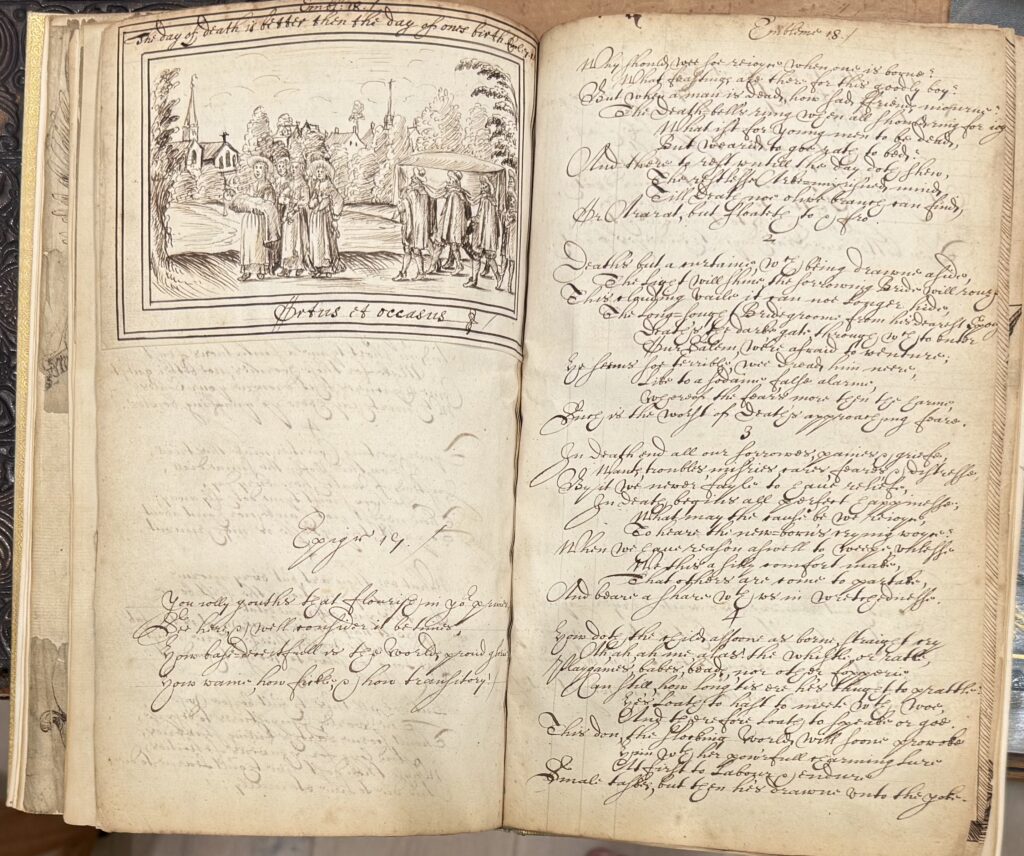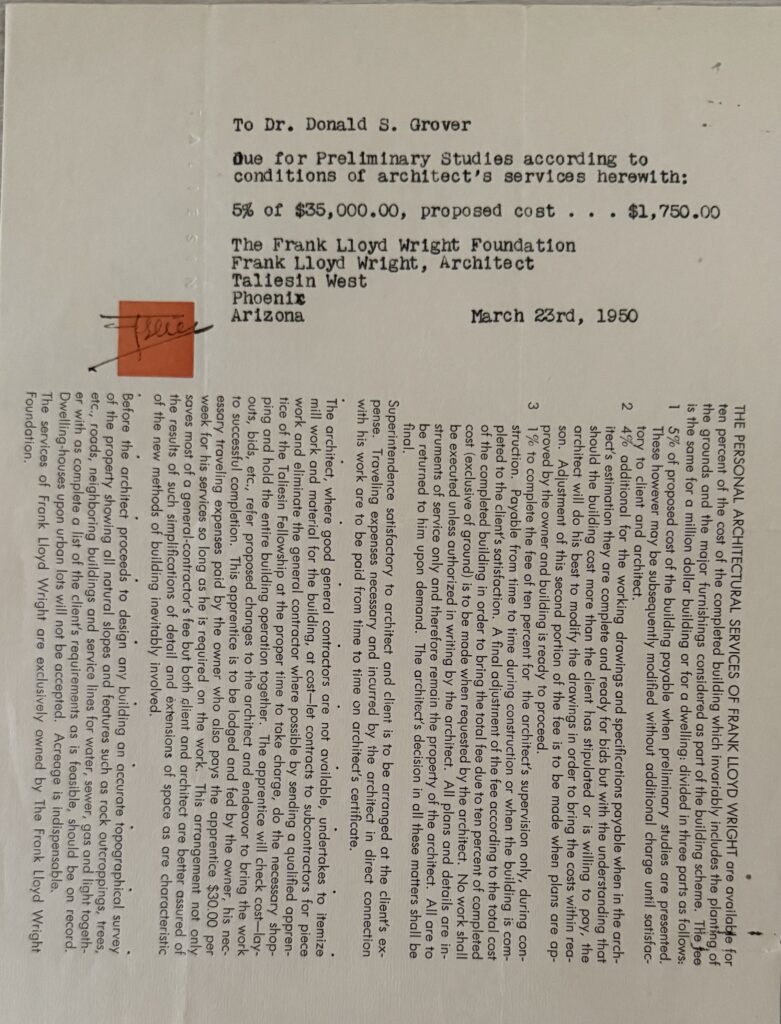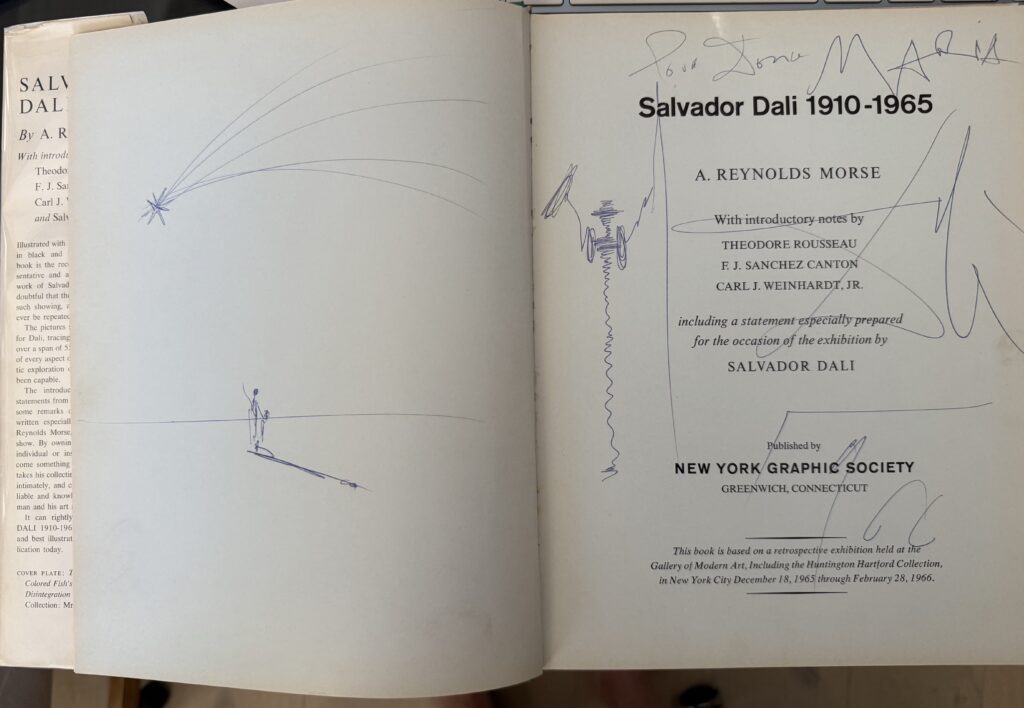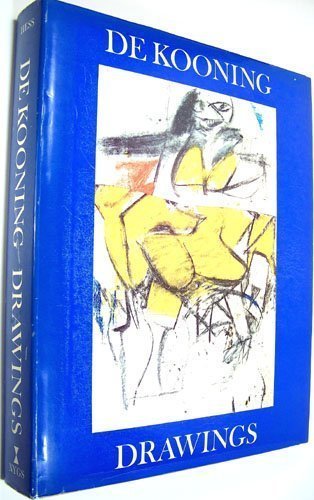INCREDIBLE ARCHIVE OF LETTERS FROM HENRI MATISSE TO HIS GREATEST PATRONS INCLUDING ORIGINAL ARTISTIC DRAWING OF HIS MASTERPIECE “THE RED STUDIO”.
Henri Matisse Archive of Letters with Original Drawings. An important archive of six letters to his earliest and most important patrons, Michael and Sarah Stein. Includes two complete and four partial letters, July 2, 1911 to April 27, 1946, on sheets of varying sizes. Roughly translated.
Sarah Stein (1870-1953) American art collector who, with husband and brother of novelist Gertrude Stein, Michael, was an early and major supporter of Henri Matisse beginning in 1905. In 1905 Sarah bought Matisse’s scandalous painting Woman with a Hat at the Salon d’Automne exhibition. Sarah almost exclusively collected Matisse and popularized him, helped him open a painting school in 1908 and then exhibit his work in the famous Armory Show in 1913, where many Americans were introduced to modern art for the first time. Matisse painted two individual portraits of the couple in 1916.
The group opens with a partial autograph letter signed. Two pages, 8 1/4 x 10 ½ inches; Issy-les-Moulineax; July 2, 1911. A superb content letter penned in French with an original drawing to his early benefactors just three months before the completion of Matisse’s historic painting “The Red Studio” (Fall 1911) and at the time he was working on the lesser-known precursor to this work, “The Pink Studio,” commissioned by Russian art collector Sergei Shchukin. Signed “Matisse” at top right of the first page, with a superb ink sketch of a new painting he describes.
After complimenting the couple on their garden, Matisse writes “…We are looking forward to seeing you again; we see [the couple’s son] Allan changed in the photo, he looks like a fine young man of elegant proportions…You told me of the earthquake in San Francisco…I lately made a visit to Borose [Greece] and there I met an American woman who…spends much time at Gertrude’s [Stein]…I am working a lot [during] this time. I just battled with a panel [likely “The Pink Studio”] destined for Shch [Sergei Shchukin] and I’m completely exhausted. I think it’s good. It is one of the panels of flowers…[with a tapestry]…blue to white flowers… In front of the tapestry one finds a vase with two arms, and on the vase is a pot of flowers from whose bottom a plant with green foliage is revealed, like I had hung in my studio last winter…In the foreground at the left an armchair called ‘transatlantic’ [with] cloth…” Matisse becomes increasingly hurried at the end of this letter, adding notes about colors and the inclusion of a gold frame, concluding: “…I have been thinking about this painting for [?] solid months…” He adds a finely executed sketch of the planned painting on the second page.
Three years and many historic works later, Matisse again writes an autograph letter (not signed and incomplete). Two pages. 8 1/4 x 10 1/2 inches; Issy; February 23, 1914. An interesting letter in French with two original drawings, in which Matisse writes of an ardent Russian collector, Sergei Shchukin who is a great admirer of Gertrude Stein, another patron, German-born Hans Purrmann, and perhaps most importantly, thoughts about a new set of works revolving around a woman in Spanish dress wearing a mantilla: “…I want to tell you that recent times have been troubled for me…Now that I’m doing well I will take advantage of it [next two lines of text obscured by a cellophane tape repair]…I have good news to give you relative to Mr. [Sergei] Shchukin: first, he is fine, this is what people who know him say…[but] no one who orders three new [paintings] from me in the derivation [?] of The Red Studio (or 3 Women) is really a man devoted to me for it is hard to do. All of Russia and France is against him…I think victory will be a long time coming. I took the liberty to send him Mde. Stein’s letter in which she appreciates the painting of the Music [“Music”, 1910]. He was very touched. He wrote to me that it was a good idea to send it to him because he has a great opinion of Mde. Stein…He asked me for two [works]…which I made in Seville, I sent them to him directly from there…He also asked me for a composition…representing my family…playing checkers…I have not decided whether to keep these two requests secret…to avoid chatter. I have not spoken of it to [Hans] Purrmann. I am going to work this week on…a pot of mauve cyclamens set on a garden table…Today I am going to make…landscapes [sic] to represent my wife dressed in Spanish [costume] with a white veil with red flowers…” Indeed, this theme would be realized in Matisse’s 1922 drawing “Women with a Veil” and his 1925 painting “The Spanish with the Mantilla.” Matisse adorns the second page of his letter with two sketches, one of the family playing chess and the other of an abstract face with veil.
Autograph letter signed, two pages, 5 x 8 inches; Nice; December 1, 1927. In French to Sarah Stein regretting his inability to accept an invitation and adding “…I set to work and began to collect the quality of effort which I [need]…Without a satisfactory model I must…turn to flowers…the weather is more windy but the temperature is mild…”
Partial autograph letter signed. Four pages, 8 ¼ x 10 ½ inches; Nice; May 30, 1934. A fine content letter to Sarah Stein in French regarding a painting for other American patrons, sisters Etta and Claribel Cone of Baltimore, with whom Matisse had a 43-year friendship. He writes: “…I’m going to make a work for which your assistance would be very useful. It concerns some portraits of…[Etta and Claribel] Cone for their collection. You could not have forgotten studies which I had promised you…Very common during this work I felt so much how your observations would have guided me to between my memories…and my photographic documents…above all for Claribel. One of the latest photos would have been good for me, her splendid hair was hidden by a deep hat. Now that the work is finished, you can help me in another choice. For the study…of the two, I usually experience the development of my feeling. The first was first studied in a series of drawings in pencil…The second character study was in charcoal. After this study was finished (Etta) I returned to Claribel in charcoal…to facilitate the typographic reproduction, and to benefit Claribel’s portrait from my experiences acquired in that of her sister…” The letter is missing pages three and four, and on page five Matisse continues: “… [tell me when] I will have the pleasure of visiting you. I will have with me the drawings which for the most part are 72 to 75cm in height. I have elongated my paper in the course of my work…to follow a human [form]…” The year after this letter Matisse would complete one of his masterpieces, “Large Reclining Nude,” which would be purchased by the Cone sisters.
Autograph letter unsigned, likely a partial letter. Two pages, 8 ¼ x 10 ½ inches; Paris; August 2, 1936. A fine content letter to Michael and Sarah Stein in French regarding his recent successes in the United States and France, and mentioning another important patron, Albert C. Barnes, founder of The Barnes Foundation in Philadelphia, and whose collection of modern art is well known. He enthusiastically writes “…An exhibition of drawings in London…(Gallery Leicester) together with a very important exhibition at Rosenberg [likely Rosenberg Gallery, New York]…were a nice [financial] reward for me…many sales which were not negligible…Next Miss Cone’s visit which brought me a new layer of work…Next the Ville de Paris’ sale of [first?] works of [Albert C.] Barnes to be placed in the new museum of modern art in…Tokyo…This work will be placed in the sculpture room or a room of painting at my choice…” Matisse concludes with a drawing of the museum room of his choice.
Finally, an autograph letter signed. Two pages, 5 ¼ x 8 inches; Venice; April 27, 1946. An interesting letter to Sarah Stein in French, mentioning his new work of cut-outs which would culminate the following year in his artist’s book Jazz. Matisse had been diagnosed with abdominal cancer in 1941. He was operated on and was largely wheel-chair bound for the rest of his life. Hurriedly penned and difficult to decipher, Matisse mentions that “…Happily, my art has remained and into it I plunge headlong…surgery…I triumphed solely through stubbornness…Finally, art has not betrayed me [and] I can give it all all the energy remaining within me…”




